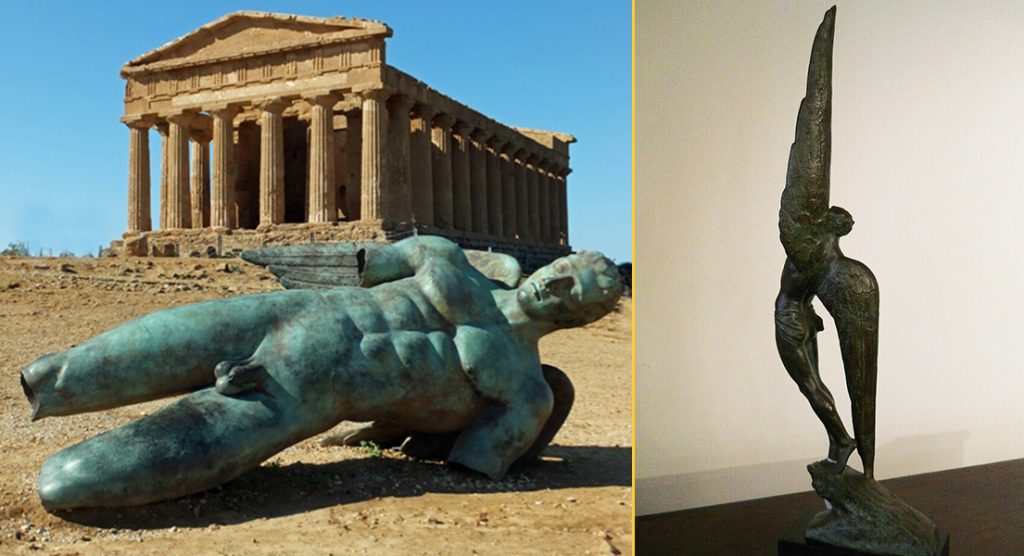flying
February 20, 2020

Flying too low is even more dangerous than flying too high,
because it feels deceptively safe.
Three version of Icarus are represented in this post:
– the thumbnail, featured image on the homepage is Henri Matisse’s Icarus painted in 1947
– in the above composite, the left image if from the Valley of the Temples in Sicily and the fallen Icarus is from ancient Greek
– and the image on the right is Pierre Le Faguay’s Art Deco sculpture of Icarus created in 1928.
In myth, Icarus is Daedalus’ rule-breaking and tragic son.
Literary interpretation found in the story the structure and consequence of over-ambition.
In psychology there have been synthetic studies of an Icarus complex – an alleged relationship between fascination for fire, high ambition, and ascensionism. (love the word) Psychiatrists saw disease in the ecstatic-highs and depressive-lows of the complex an illness similar to bipolar disorder.
Seth Godin’s 2012 The Icarus Deception points to the historical change in how Western culture both propagated and interpreted the myth. Everyone knows that Icarus’s father made him wings and told him not to fly too close to the sun; he ignored the warning and plunged to his doom. The lesson: Play it safe. Listen to the experts. It was the perfect propaganda for the industrial economy. What boss wouldn’t want employees to believe that obedience and conformity are the keys to success?
But Godin also argues that “we tend to forget that Icarus was also warned not to fly too low, because the seawater would ruin the lift in his wings.”
In the composite, I put the fallen hero first; so that in reading left-to-right, you see a young man getting ready to leap last. It’s the strategy of putting the most important element at the end.